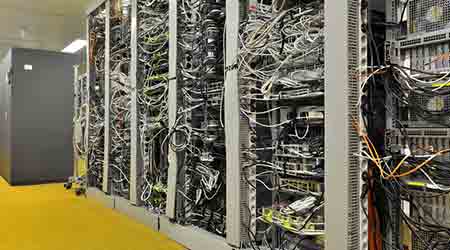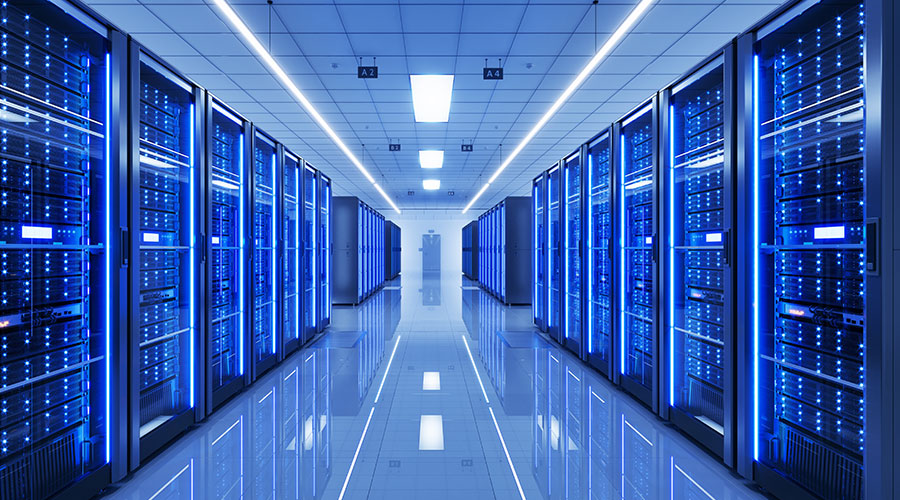 When adding backup power capacity, facility managers should look beyond today’s needs and consider what technology the data center will have to support in the long-term.©Jdanne
When adding backup power capacity, facility managers should look beyond today’s needs and consider what technology the data center will have to support in the long-term.©JdanneConsiderations For Adding Backup Power To An Existing Data Center
First part of a four-part article on best practices for adding power in data centers.
If an existing data center needs more backup power, the first thing a facility manager is likely to think of is avoiding problems with the current operation of the data center. That’s logical, of course, but it’s not the whole story. A range of short- and long-term factors should be considered in planning for an increase in data center backup power capacity.
The first question to ask might seem surprising: Does the data center actually need more backup power? Apart from colocation providers, says Christopher Wade, national account manager, Technical Services/Critical Facilities, Newmark Grubb Knight Frank, “it is a well-known fact that most data centers have too much power capacity and often fail to utilize it.”
To answer the question of need, a facility manager should undertake a comprehensive concept study of the existing facility to thoroughly understand how it has been constructed — how power flows and how cooling works. "You need to understand the system capacity and the ratings of the electrical/mechanical system to determine overall data center capacity," says Rajan Battish, vice president - mission critical expert, CallisonRTKL.
"You should always plan capacity so you don't run out of any one resource in the space, power, and cooling triangle," says Steve Smith, manager, data center/critical systems and building operations, Arvest Bank Operations.
"Building too much or too little of any one creates stranded capacity that you can't use."
That means planning for added backup power capacity has to take into account the availability of space and cooling capacity as well. As Smith points out, "once you reach 100 percent of cooling capacity, if you have additional power, you can't use it. That's called stranded capacity."
Understanding the limitations of the present system requires a close look at both the MOP (method of procedures) and SOP (sequence of operations) to understand how the electrical and mechanical infrastructure equipment is providing power and cooling, Battish says.
"Things can go wrong when people in facility operations don't understand their own infrastructure and how it works,” Battish says. For example, if operations are not well documented, staff may not have a good understanding of regard to how the data center was designed to operate when it was first commissioned. Retrocommissioning can be used to document how the system works as well as the true capacity of the infrastructure, says Battish.
Another factor to consider in planning is that "power equipment upgrades may generate the need for broader wiring and distribution upgrades," says Wade. That’s especially true in older buildings.
It’s essential to look to the future when adding backup power capacity. Advance planning should look “five, ten, or twenty years down the road, so that the data center is not 'handcuffed' and can expand as necessary,” says Pat McGettigan, vice president, preconstruction – mission critical, Faith Technologies. “The key is to provide scalability for expansion over the longer term.”
When looking to the future, a total cost of ownership analysis can help to identify the optimal solution for backup capacity. “For example, if the UPS system accommodates 100 KW and we want to add another 100 KW, does it make sense to use the existing module system and add the power, or buy a newer and more efficient UPS that can deliver 200 KW of power?" Battish says. Evaluating questions like that over a 10-year life cycle can help facility managers understand the best way to increase capacity with the lowest total cost of ownership, rather than just looking at the immediate need for increased capacity.
"It is important to decide what your long-term load will be, so you can grow your UPS or a generator plan modularly," Smith says.
"For example, if you have a 1,000 KW load for one generator, you will typically install two generators for redundancy," he says. “But if you install three generators for additional redundancy, they will be lightly loaded and you will lose efficiency. Lightly loaded generators are also subject to a condition called 'wet stacking' where the fuel injectors become carbonized and the engine will become rough running and will smoke if run for long periods. The biggest challenge is right sizing for efficiency today and capacity tomorrow.”
Adding a large UPS for a light load is inefficient, Smith points out. What’s more, oversizing a UPS can create harmonics problems. "Harmonics are a distortion of the power waveform, generally caused by non-linear loads such as computers," Smith says. Harmonic filters can be used, either on the utility-facing side or built into UPS units. Another problem an oversized UPS can cause is a low power factor, which may lead the utility to charge a low power factor penalty. "In some cases this can be rectified by installing power-factor correction equipment; however, this is costly and avoidable with good initial planning practices," Smith says.
Related Topics:














